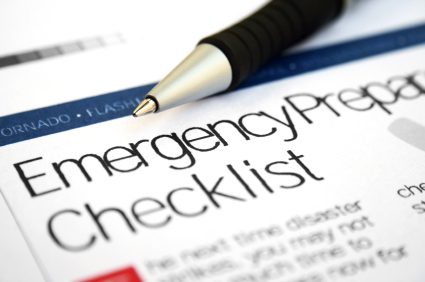 A few months ago an earthquake hit off the coast of Vancouver. It wasn’t the “Big One” they’ve been predicting for decades, but it was strong enough to make my apartment building sway and my Christmas tree ornaments do a little dance. While there was little damage caused by the quake, it made me realize how ill prepared I am for emergencies. They say that in emergency situations you should be able to take care of yourself and your family for a minimum of 72 hours–I wouldn’t have lasted 12. Needless to say that since then I’ve been stocking up on emergency supplies. If you’re like me and aren’t quite prepared for a disaster, here are a few essentials you should always have readily available.
A few months ago an earthquake hit off the coast of Vancouver. It wasn’t the “Big One” they’ve been predicting for decades, but it was strong enough to make my apartment building sway and my Christmas tree ornaments do a little dance. While there was little damage caused by the quake, it made me realize how ill prepared I am for emergencies. They say that in emergency situations you should be able to take care of yourself and your family for a minimum of 72 hours–I wouldn’t have lasted 12. Needless to say that since then I’ve been stocking up on emergency supplies. If you’re like me and aren’t quite prepared for a disaster, here are a few essentials you should always have readily available.
Food This shouldn’t come as a shock to you, but you should have enough food on hand to last your family a minimum of three days. I always used the excuse “I live in an apartment so storage is at a premium” for why I didn’t have an emergency stash of non-perishable food available. However, I picked up several air-tight canisters and now have an ample supply of pasta, rice, crackers, and granola sitting nicely in my new “emergency-box” on a shelf in my linen closet. The air-tight seal of the canisters will keep the food fresh and free of bugs, and the canisters themselves take up less space than a bunch of boxes. You should also have an extra can opener stashed with all your emergency supplies, so you can get into all your canned items should the need arise.
This shouldn’t come as a shock to you, but you should have enough food on hand to last your family a minimum of three days. I always used the excuse “I live in an apartment so storage is at a premium” for why I didn’t have an emergency stash of non-perishable food available. However, I picked up several air-tight canisters and now have an ample supply of pasta, rice, crackers, and granola sitting nicely in my new “emergency-box” on a shelf in my linen closet. The air-tight seal of the canisters will keep the food fresh and free of bugs, and the canisters themselves take up less space than a bunch of boxes. You should also have an extra can opener stashed with all your emergency supplies, so you can get into all your canned items should the need arise.
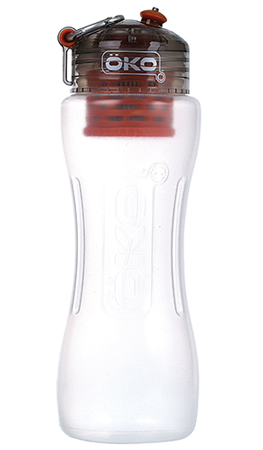 Water
Water
For the first decade of my life, I lived in Edmonton and was there to experience the tornado of 1987, otherwise known as “Black Friday.” I’ll never forget coming home from school and turning on the taps only to see brown, sludgy, dirty water spew out. Water is a huge part of any emergency kit, so be sure to have ample bottled water on hand, or a water filtration system like the ÖKO water bottle. Its ÖKO Level 2 filter screens out bacteria, so even that dirty tornado muck would have been filtered into clean-tasting potable water.
Camp Stove
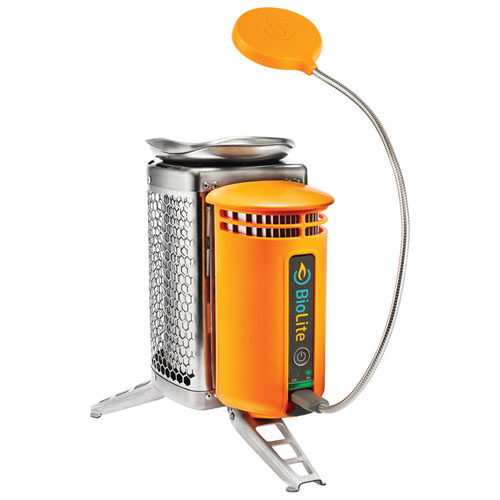 A compact camp stove is a great addition to any emergency preparedness kit, especially when it serves multiple functions. This one from BioLite is ideal for home use since it runs on biomass like twigs, sticks, and wood pellets, and produces smoke-free flames. With it you can boil water, cook your meals, and recharge your USB devices like a smartphone, tablet, head lamp, camera, or even rechargeable batteries. Twenty minutes of charging with a strong fire will give you about an hour of talk time on most smartphones–how cool is that? It’s also exceptionally light, weighing in at two pounds, and about the size of a one-liter bottle of water. It also comes with a FlexLight so you can actually see what it is your cooking if the power is out.
A compact camp stove is a great addition to any emergency preparedness kit, especially when it serves multiple functions. This one from BioLite is ideal for home use since it runs on biomass like twigs, sticks, and wood pellets, and produces smoke-free flames. With it you can boil water, cook your meals, and recharge your USB devices like a smartphone, tablet, head lamp, camera, or even rechargeable batteries. Twenty minutes of charging with a strong fire will give you about an hour of talk time on most smartphones–how cool is that? It’s also exceptionally light, weighing in at two pounds, and about the size of a one-liter bottle of water. It also comes with a FlexLight so you can actually see what it is your cooking if the power is out.
Lighting Candles may be romantic, but they aren’t the most practical source of light during an emergency situation. A battery-operated flashlight is a must for any emergency kit, but you should also consider additional sources of light like this NanoGrid System from BioLite. Essentially a lighting and energy hub, the NanoGrid allows you to sting the included SiteLights and hang from items like a shelf, cabinet, or even a tree, so you aren’t complete in the dark during a power outage. The system can run for up to 22 hours on a charge, has different dimming lighting modes, and an emergency strobe setting.
Candles may be romantic, but they aren’t the most practical source of light during an emergency situation. A battery-operated flashlight is a must for any emergency kit, but you should also consider additional sources of light like this NanoGrid System from BioLite. Essentially a lighting and energy hub, the NanoGrid allows you to sting the included SiteLights and hang from items like a shelf, cabinet, or even a tree, so you aren’t complete in the dark during a power outage. The system can run for up to 22 hours on a charge, has different dimming lighting modes, and an emergency strobe setting.
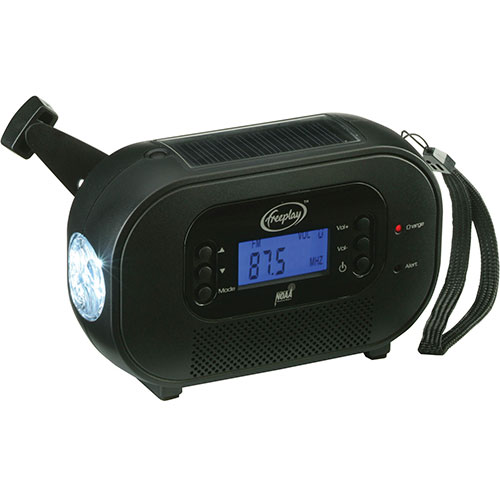 Solar/Crank Radio
Solar/Crank Radio
If you’re relying on your smartphone or television for information during an emergency, you may be out of luck. Instead, you should have on hand a radio that isn’t reliant on power to function, like the Freeplay Buddy multi-powered weather band radio, which can be charged by USB, solar power or hand crank. Its AM/FM radio will let you tune into your favourite stations so you can stay informed during an emergency, and you can even use its built-in LED flashlight as a back up source of light. It’s small and compact and even has a wrist strap so you can tote it around with you should the need arise.
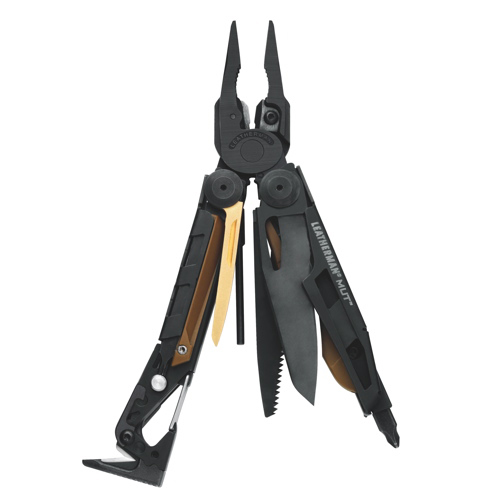 Multi-tool
Multi-tool
Another necessity in any home emergency kit is a multi-tool like the Leatherman Military Utility Tool. It includes a seemingly endless list of tools, including a variety of pliers, wire cutters, knives, saws, scissors, files, and screwdriver bits, and also comes with a replaceable titanium pocket clip and MOLLE sheath. With the Leatherman MUT you’ll be ready for anything an emergency situation might throw your way.
First-Aid Kit
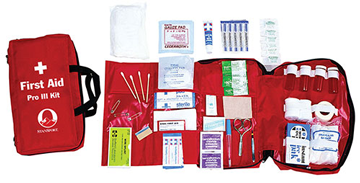 A well-stocked first aid kit is an absolute must and will definitely come in handy in emergencies. The key is to make sure items are replenished as they are used so you aren’t ever in a situation where you need gauze only to remember you used it all up a year ago when you fell and scraped your knee. The Stansport Pro II is a great option as it features 42 essential first aid items like gauze and bandages, and also comes with a handy first-aid guide.
A well-stocked first aid kit is an absolute must and will definitely come in handy in emergencies. The key is to make sure items are replenished as they are used so you aren’t ever in a situation where you need gauze only to remember you used it all up a year ago when you fell and scraped your knee. The Stansport Pro II is a great option as it features 42 essential first aid items like gauze and bandages, and also comes with a handy first-aid guide.
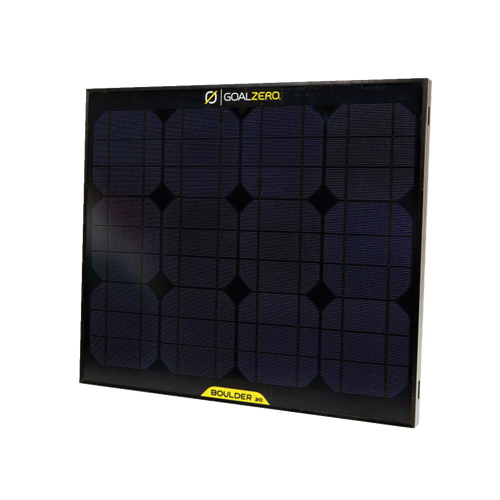 Backup Power
Backup Power
Last but not least, your home emergency preparedness kit should include some way of harnessing backup power. One option is a solar panel, like the GOAL ZERO 30-watt Solar Panel, which captures energy from the sun, and converts it into power you can store and use. You can even link multiple solar panels together to maximize the amount of energy captured.
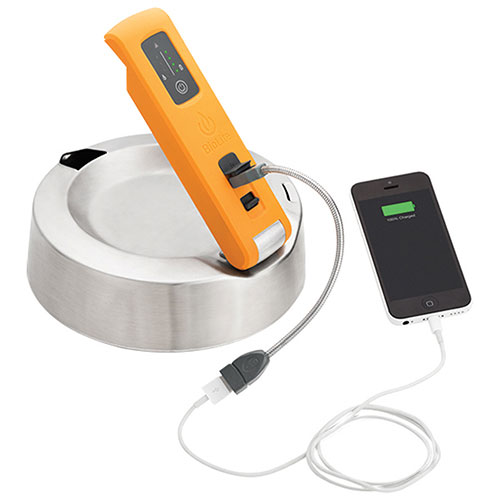 Another option is the BioLite KettleCharge, which doesn’t require sunlight to produce electricity. Instead, the Thermoelectric Generator (TEG) located on its base uses a difference in temperature to produce power. I can’t really get my brain around how that’s even possible, but with the KettleCharge and its 750ml stainless steel kettle, you can boil water for cooking, drinking, and cleaning, all while generating off-grid power.
Another option is the BioLite KettleCharge, which doesn’t require sunlight to produce electricity. Instead, the Thermoelectric Generator (TEG) located on its base uses a difference in temperature to produce power. I can’t really get my brain around how that’s even possible, but with the KettleCharge and its 750ml stainless steel kettle, you can boil water for cooking, drinking, and cleaning, all while generating off-grid power.
Once you have all the components to your home emergency preparedness kit, you’ll want to make sure everything is together, organized, and easily accessible. One thought is to put it all in one or two backpacks, so if you need to leave your home for any reason, you can easily carry everything with you. Alternatively, store it all in a sealable container and keep that container in a cupboard in your kitchen or in a closet. You never know when an emergency can happen, so don’t delay and get your ducks in a row sooner than later. Stay safe!
Check out Best Buy’s complete range of Sports & Recreation products here.
Main image courtesy of Canada Food Direct.



